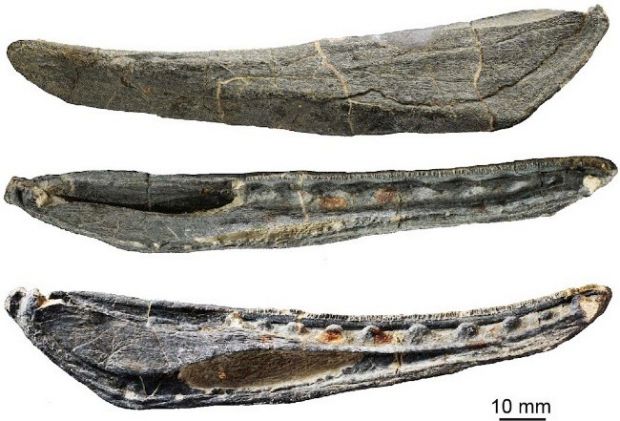Paleontologists have recently come across the 423-million-year-old fossilized remains of a predatory fish belonging to a species known to the scientific community as Megamastax amblyodus.
In a paper published in yesterday's issue of the journal Scientific Reports, the researchers detail that the remains in question, a photo of which is available below, are jaw and teeth fragments, Live Science tells us.
Based on these fossils, it was concluded that the animal's jaw alone was about 6.7 inches (17 centimeters) long, and that the fish measured approximately 1 meter (3.3 feet) from head to tail, the same source details.
By the looks of it, this ancient fish had a fairly large mouth and conical, blunt teeth. It is believed that these features made it possible for it to prey on armored fish in its natural habitat.
Talking to the press, paleontologist Brian Choo with the Chinese Academy of Sciences explained that this fish was likely the biggest predator of its day.
Specifically, evidence at hand indicates that, when compared to other vertebrates that roamed the Earth about 423 million years ago, Megamastax amblyodus was about three times bigger.
Still, it did not take long for this species to be dethroned by other, more massive fish that could grow to measure an impressive 10 meters (33 feet) in length.

 14 DAY TRIAL //
14 DAY TRIAL // 

